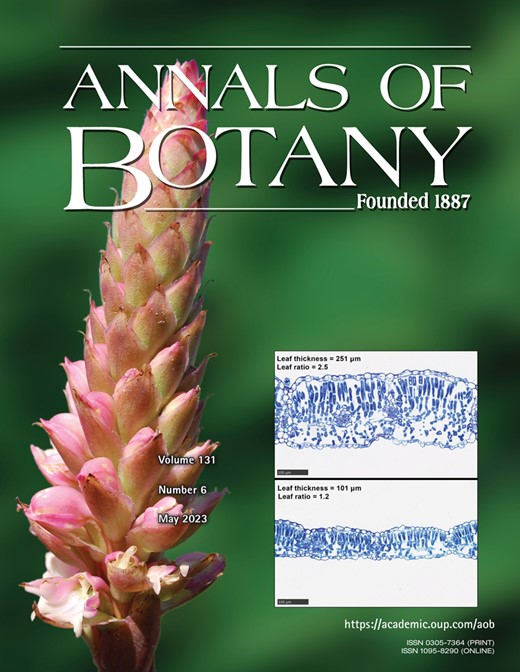Ver ítem
- xmlui.general.dspace_homeCentros Regionales y EEAsCentro Regional Patagonia NorteEEA BarilocheArtículos científicosxmlui.ArtifactBrowser.ItemViewer.trail
- Inicio
- Centros Regionales y EEAs
- Centro Regional Patagonia Norte
- EEA Bariloche
- Artículos científicos
- Ver ítem
Intraspecific phylogeny of a Patagonian fescue: differentiation at molecular markers and morphological traits suggests hybridization at peripheral populations
Resumen
Background and Aims: Grasses of the Festuca genus have complex phylogenetic relations due to morphological similarities among species and interspecific hybridization processes. Within Patagonian fescues, information concerning phylogenetic relationships is very scarce. In Festuca pallescens, a widely distributed species, the high phenotypic variability and the occurrence of interspecific hybridization preclude a clear identification of the populations.
[ver mas...]
Background and Aims: Grasses of the Festuca genus have complex phylogenetic relations due to morphological similarities among species and interspecific hybridization processes. Within Patagonian fescues, information concerning phylogenetic relationships is very scarce. In Festuca pallescens, a widely distributed species, the high phenotypic variability and the occurrence of interspecific hybridization preclude a clear identification of the populations. Given the relevance of natural rangelands for livestock production and their high degradation due to climate change, conservation actions are needed and knowledge about genetic variation is required.
Methods: To unravel the intraspecific phylogenetic relations and to detect genetic differences, we studied 21 populations of the species along its natural geographical distribution by coupling both molecular [internal transcribed spacer (ITS) and trnL-F markers] and morpho-anatomical analyses. Bayesian inference, maximum likelihood and maximum parsimony methods were applied to assemble a phylogenetic tree, including other native species. The morphological data set was analysed by discriminant and cluster analyses.
Key Results: The combined information of the Bayesian tree (ITS marker), the geographical distribution of haplotype variants (trnL-F marker) and the morpho-anatomical traits, distinguished populations located at the margins of the distribution. Some of the variants detected were shared with other sympatric species of fescues.
Conclusions: These results suggest the occurrence of hybridization processes between species of the genus at peripheral sites characterized by suboptimal conditions, which might be key to the survival of these populations.
[Cerrar]

Fuente
Annals of Botany 131 (6) : 1011-1023. (May 2023)
Fecha
2023-05
Editorial
Oxford University Press
ISSN
0305-7364 (Print)
1095-8290 (Online)
1095-8290 (Online)
Documentos Relacionados
Formato
pdf
Tipo de documento
artículo
Proyectos
(ver más)
INTA/2019-PE-E6-I142-001, Mejoramiento genético de leguminosas y gramíneas forrajeras para incrementar la productividad y la sustentabilidad de los sistemas agropecuarios de la Argentina
Palabras Claves
Derechos de acceso
Abierto
 Excepto donde se diga explicitamente, este item se publica bajo la siguiente descripción: Creative Commons Attribution-NonCommercial-ShareAlike 2.5 Unported (CC BY-NC-SA 2.5)
Excepto donde se diga explicitamente, este item se publica bajo la siguiente descripción: Creative Commons Attribution-NonCommercial-ShareAlike 2.5 Unported (CC BY-NC-SA 2.5)


